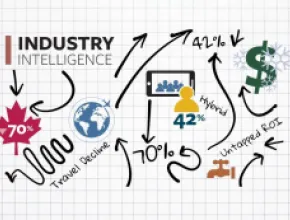In the past few years, jarring pictures flashing from across the globe seem to appear with more frequent regularity.
There was the massively destructive March 2011 earthquake and tsunami in Japan, political uprisings in Egypt, Libya and other Arab countries, and devastating tornadoes that virtually wiped out towns in the U.S. Incredibly, despite the horrific news, 50 percent of corporate meeting planners do not currently have a formal Global Duty of Care program, aka a contingency plan, in place, according to a recent StarCite poll.
We asked the meeting planners who indicated that they had a Duty of Care plan in place about what stage of development those plans were in. More than half (56 percent) said they have “few if any” related policies in place, while 36 percent said they have policies implemented but the focus is primarily on responding to incidents versus taking proactive measures (such as risk assessment of destinations) to increase the safety of meetings travelers. Meanwhile, only 8 percent said they have a program that’s integrated across their entire organization.
The most important aspects of a Duty of Care policy are to set up procedures to find out where people are and then to contact them and bring them to safety. In order to achieve this, a comprehensive, enterprise-wide view of meetings and events that your attendees are engaged in, regardless of their departments, is needed.
Here are some best practices to creating and working a plan:
- Collaborate with key stakeholders in your organization to communicate your plans and learn from their processes and procedures
- Get senior management support for your efforts
- Use your meeting planning technology as a tool to find and store information on attendees such as mobile data, medical information and emergency contacts
- Talk with suppliers to gauge their readiness; it may affect selection
- Communicate your new program to all meeting attendees, planners and supplier partners
- Use business intelligence from your meetings technology to pinpoint the whereabouts of your attendees so you can provide immediate assistance to those in need.
We live in an unpredictable world, and it is a tough job to keep on top of global events that may affect your attendees. But with a well-designed Duty of Care plan and the right technology to empower it, you can be more prepared. Nothing less than your attendees’ safety—and the reputation of your company—is at issue!
Kevin Iwamoto, vice president of enterprise at StarCite, has 20-plus years of experience managing corporate travel and meetings programs. Iwamoto was president & CEO of the National Business Travel Association from 2001-2003, where he founded the global Paragon Partnership organization.






